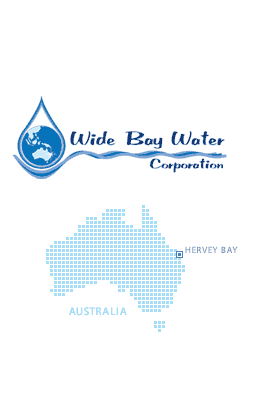Wide Bay Water Corporation (WBWC)
 Wide Bay Water Corporation is the first local government owned corporation in Queensland, providing water and wastewater services to the city of Hervey Bay. Wide Bay Water Corporation also undertakes the planning, development and operation of water distribution infrastructure in the collection, distribution and disposal of water. As part of this work, Wide Bay Water Corporation has become nationally and internationally recognised in the forefront of water loss prevention and distribution management. Wide Bay Water Corporation is also recognised nationally as a leader in the development of land based water reuse facilities predominantly to improve crop productivity to the advantage of local farmers.
Wide Bay Water Corporation is the first local government owned corporation in Queensland, providing water and wastewater services to the city of Hervey Bay. Wide Bay Water Corporation also undertakes the planning, development and operation of water distribution infrastructure in the collection, distribution and disposal of water. As part of this work, Wide Bay Water Corporation has become nationally and internationally recognised in the forefront of water loss prevention and distribution management. Wide Bay Water Corporation is also recognised nationally as a leader in the development of land based water reuse facilities predominantly to improve crop productivity to the advantage of local farmers.Wide Bay Water Corporation share their knowledge and expertise in water management through external training programs, including intensive Master Classes for water managers and workshops for operators both in Australia and overseas. In partnership with the University of Southern Queensland the Wide Bay Water Training and Research Centre have been developed, the focus being on developing skills to improve the water industry. The Centre draws on expertise of leading industry practitioners to develop courses directly and relevant to water businesses throughout Australia, and lately this have been expanded through assisting SOPAC with minimising water losses throughout the Pacific region.

















